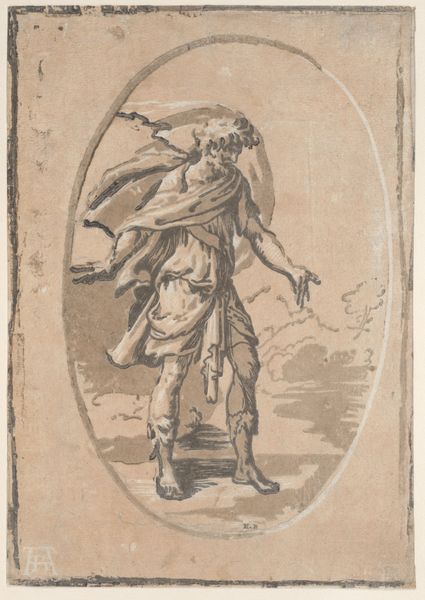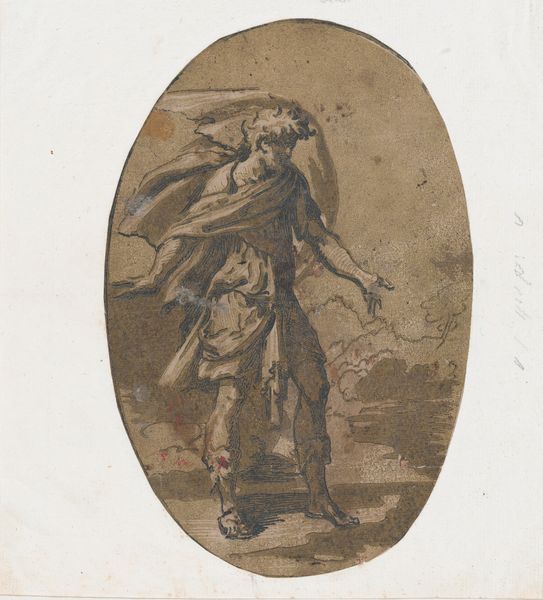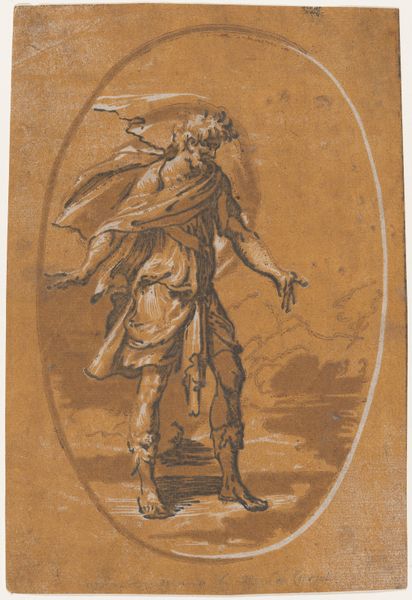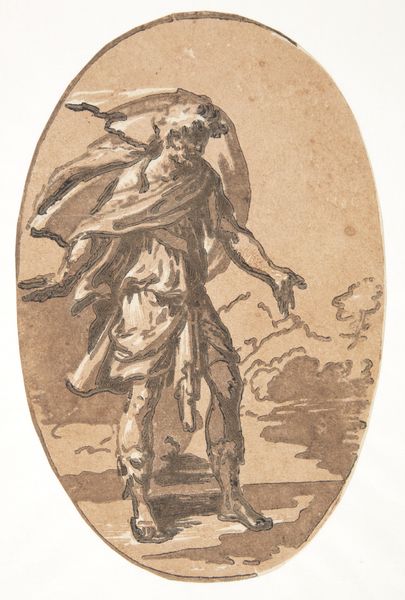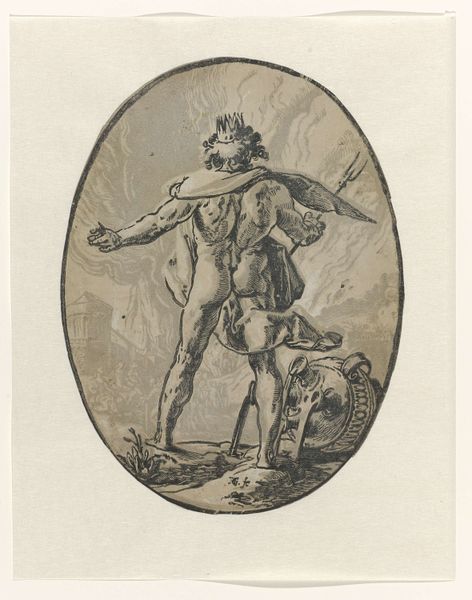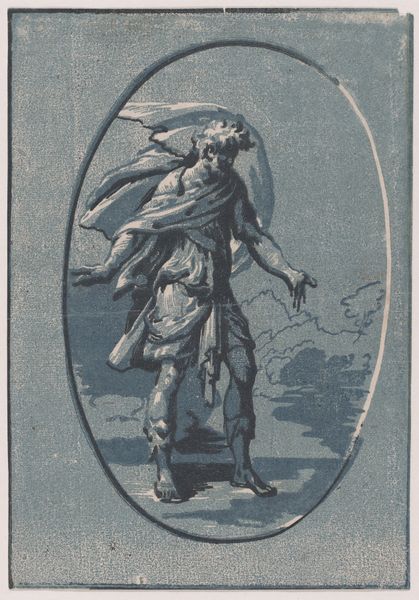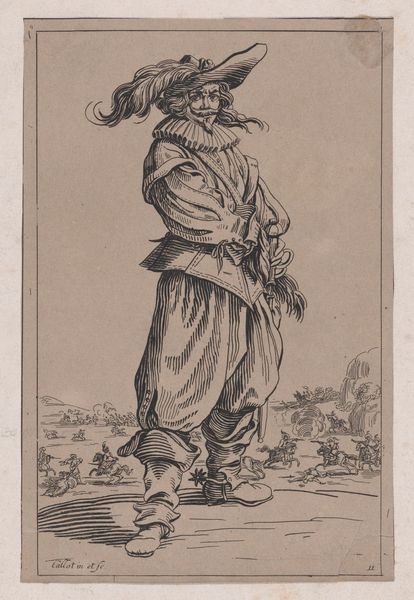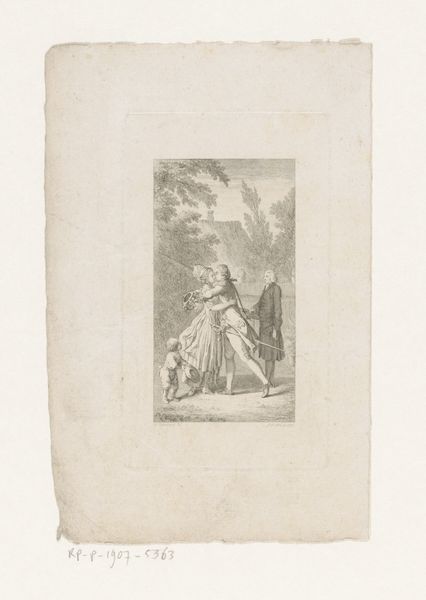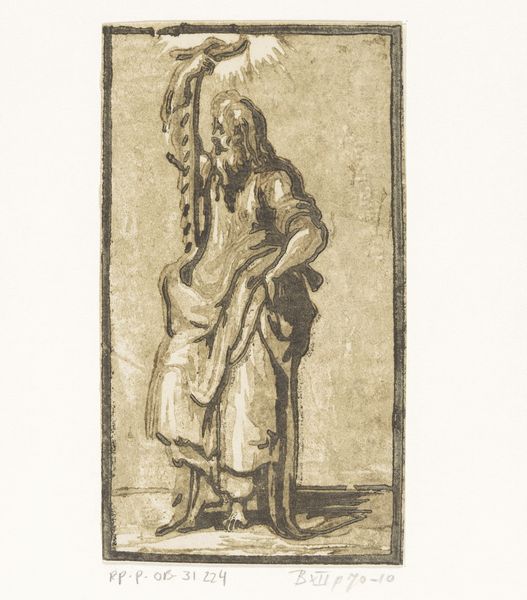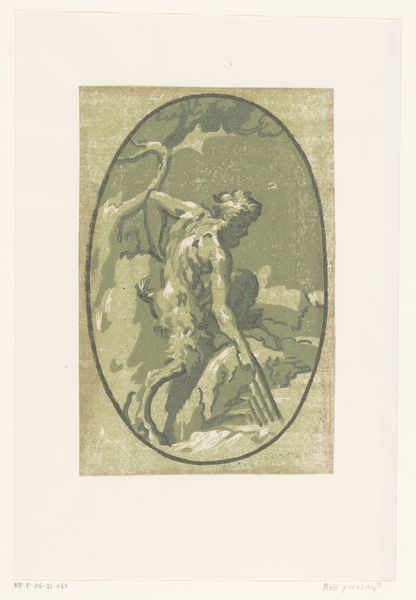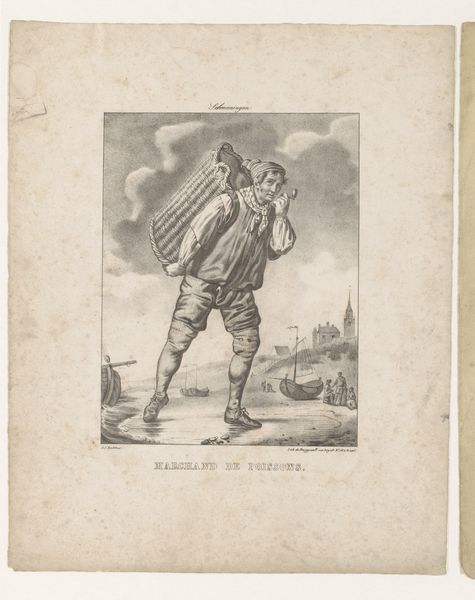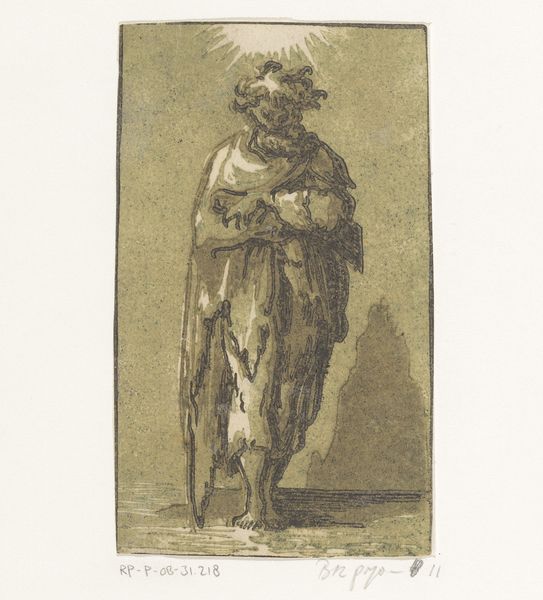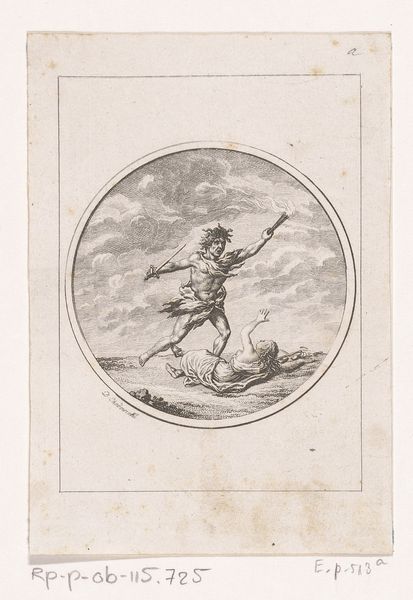
drawing, ink
#
drawing
#
landscape
#
figuration
#
11_renaissance
#
ink
Dimensions: height 277 mm, width 196 mm
Copyright: Rijks Museum: Open Domain
This print, "Man met gespreide armen in een landschap," was made by Ugo da Carpi around the early 16th century. It’s a chiaroscuro woodcut, a process involving multiple woodblocks, each printing a different tone to create a dramatic, three-dimensional effect. Look closely, and you can see how the varying shades of light and dark define the figure’s form and the surrounding landscape. The materiality of the woodblock itself is key here. The artist had to carefully carve away at the wood to create the image, using the grain to his advantage to create texture and depth. Da Carpi was a real virtuoso of this subtractive process. This technique, while laborious, allowed for a certain level of mass production and dissemination of images, which would have been significant in a period hungry for visual culture. We can think about the amount of work involved in the production process and its place in the wider economic system of the time. Ultimately, this print invites us to consider the dialogue between the hand-crafted and the reproducible, challenging our conventional ideas about art, labour, and value.
Comments
No comments
Be the first to comment and join the conversation on the ultimate creative platform.
